LAUNCH DELAY: SpaceX CRS-18 now scheduled to launch 6:24 pm ET Wednesday, July 24
Go to this Blog Post for details
To readers – if you would like to wish the Mission 13 to ISS student researchers, their teachers, and their communities good luck on the launch of their experiments on SpaceX CRS-18 from Kennedy Space Center, Florida, you are invited to leave a comment below:)
Caption: Liftoff of the SpaceX CRS-15 Mission at 5:42 am ET, June 29, 2018. The Falcon 9 rocket and Dragon spacecraft launched from Space Launch Complex 40 at Cape Canaveral Air Force Station, Florida. Dragon was carrying almost 6,000 pounds of science research, crew supplies and hardware to the International Space Station – including 34 student experiments comprising the SSEP Mission 12 Mercury payload. We are now counting down to the launch of the SSEP Mission 13 Gemini payload of 41 experiments on SpaceX CRS-18 on July 21, 2019. (Credit: NASA TV)
Launch of SSEP Mission 13 to the International Space Station
The SSEP Mission 13 to ISS flight experiments payload designated Gemini is scheduled to launch Sunday, July 21, 2019, at 7:35 pm EDT from Space Launch Complex 40, Cape Canaveral Air Force Station, Florida, aboard SpaceX CRS-18.
The launch will be covered live on NASA TV and at SpaceX, and we have provided video portals below for both if you’d like to watch right here on the SSEP National Program website. Also below is the July 15, 2019, NASA Media Advisory that provides NASA TV live coverage times for launch on July 21 and arrival at Station on Tuesday, July 23.
A heartfelt congratulations to all 23,100 students that participated in Mission 13 microgravity experiment design, and submitted 3,683 flight experiment proposals for formal review and selection; the 34,100 students that participated in the Mission Patch art and design competitions; and the 146 student Principal Investigators, Co-Investigators, and Collaborators comprising the student researcher teams for the 41 selected SSEP Mission 13 flight experiments – we are all very proud of you. You are the next generation of researchers on the frontiers of exploration.
As of this writing, we are at T-minus 4 Days 5 Hours and counting – see the countdown clock in the right column. Godspeed Dragon.
Dr. Jeff Goldstein
SSEP National Program Director
Center Director, National Center for Earth and Space Science Education
Mission 13 to ISS Historical Data
Number of Participating Communities: 38
Scope: 23,117 grade 5-16 students fully engaged in experiment design
Number of student team proposals received: 3,683
Number of experiments selected for flight: 41; 1 community flying 2 experiments & 1 community flying 3 experiments
Announcement of Opportunity: March 9, 2018
Experiment design competition and proposal writing: September 4 – November 2, 2018 (9 Weeks)
Flight experiment selection: December 13, 2018
MEDIA PACKAGE for Mission 13
– webpages
Mission 13 Media Coverage: 98 articles as of 7/17/19
Mission 13 Community Profiles: 38 communities, 110 organizational partners, 544 schools
– downloadable documents (PDFs)
SSEP National Program Overview
Mission 13 Flight Experiments Summary Table
Mission 13 Flight Experiments: Research Teams and Experiment Descriptions – an experiment-by-experiment summary including community, school, grade level, research team (PIs, Co-Is and Collaborators), and experiment abstract
Historical Multimedia –
2019 SSEP Annual Conference, Smithsonian National Air and Space Museum, Steven F. Udvar-Hazy Center, July 1-2, 2019. Visit the Conference page.
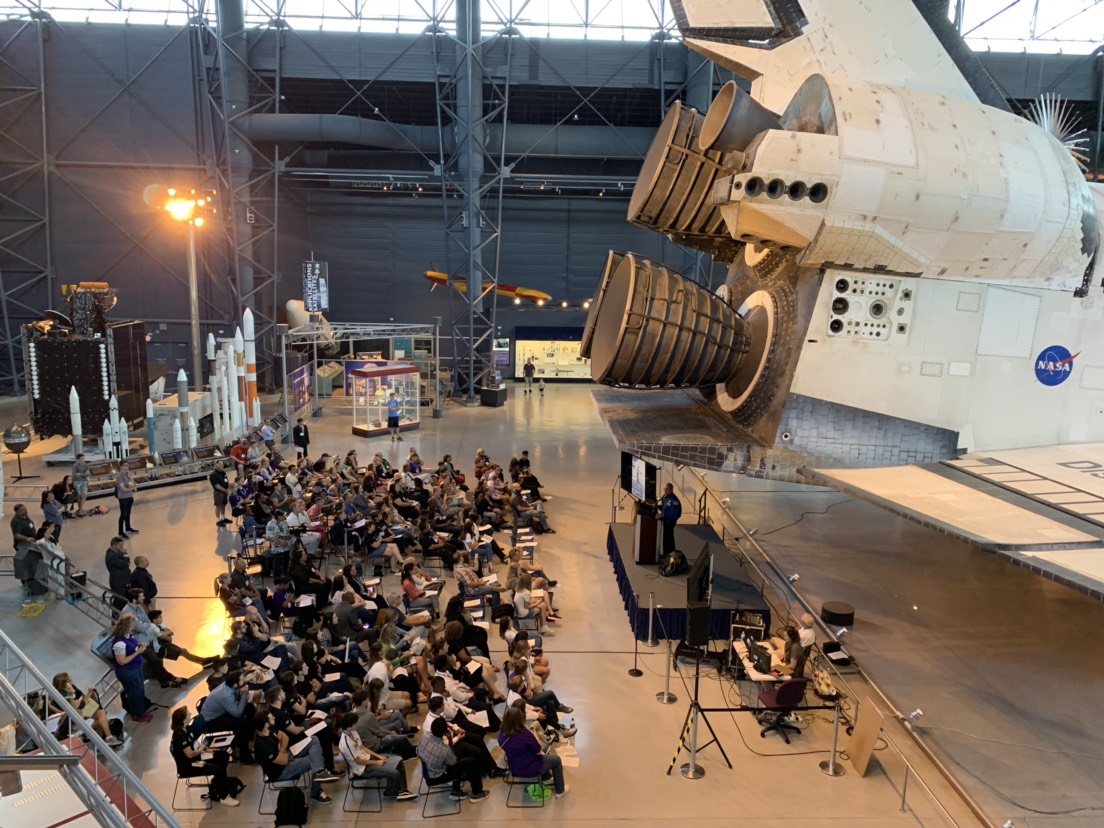
The conference was held under Space Shuttle Discovery, As part of a long list of accomplishments, Discovery deployed the Hubble Space Telescope. Click to Zoom
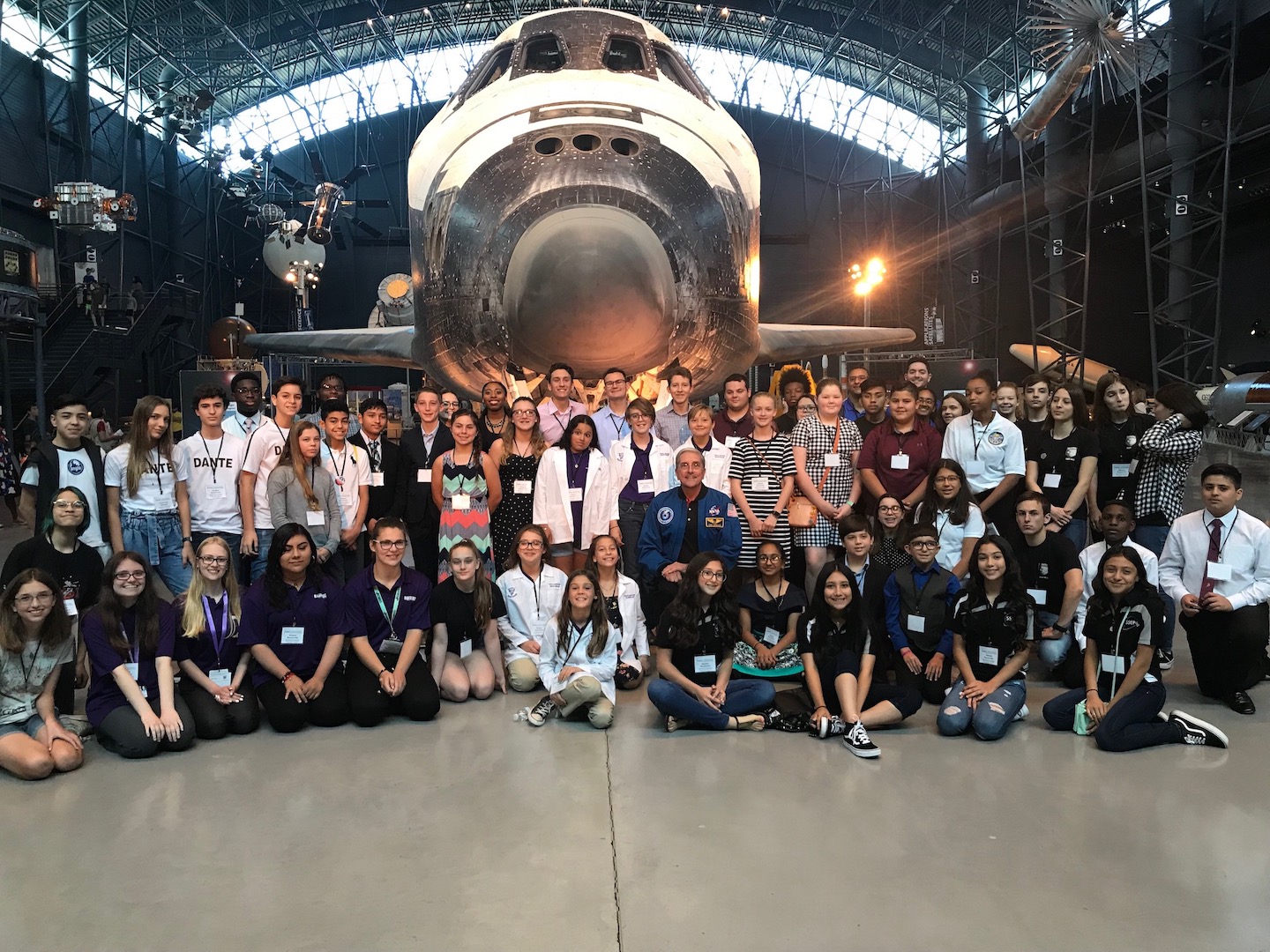
Day 2 student researchers posing with astronaut Don Thomas in front of Discovery. Don had just talked to them about what it was like to fly on Discovery. See his presentation last year. Click to Zoom
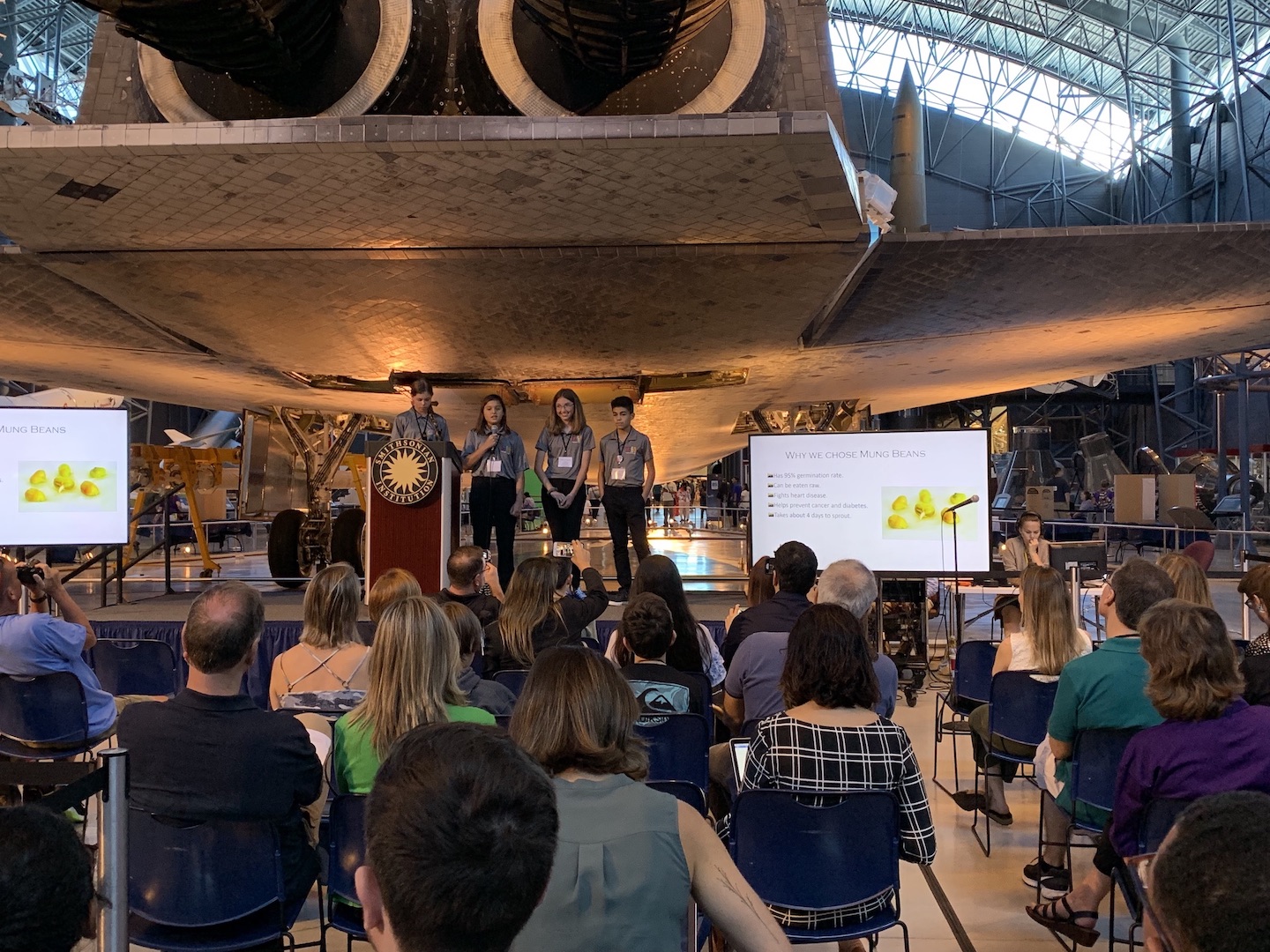
Presentation from Mission 13 student flight team from Hillsborough County Public Schools. Click to Zoom
Mission 10 to ISS Student Researchers Presenting at the Kennedy Space Center Visitor Complex on Launch Day, June 3, 2017
WATCH SPACEX LAUNCH LIVE ON THIS NASA TV PORTAL
WATCH SPACEX LAUNCH LIVE ON THIS SPACEX PORTAL
not yet available
July 15, 2019
MEDIA ADVISORY M19-072
NASA to Broadcast Next Space Station Resupply Launch, Prelaunch Activities
NASA commercial cargo provider SpaceX is targeting 7:35 p.m. EDT Sunday, July 21, for the launch of its 18th agency-contracted resupply mission to the International Space Station. Live coverage will begin on NASA Television and the agency’s website Sunday with prelaunch events.
The Dragon spacecraft will deliver supplies and critical materials to directly support dozens of the more than 250 science and research investigations that will occur during Expeditions 60 and beyond. In addition to bringing research to station, the Dragon’s unpressurized trunk is carrying the International Docking Adapter-3 (IDA-3), which, when installed on the space station, will provide the microgravity laboratory with two common ports enabling expanded opportunities for visiting vehicles, including new spacecraft designed to carry humans for NASA’s Commercial Crew Program.
Dragon will dock to the space station Tuesday, July 23. When it arrives, NASA astronaut Nick Hague will grapple Dragon with NASA astronaut Christina Koch acting as a backup. NASA’s Andrew Morgan will assist the duo by monitoring telemetry during Dragon’s approach. The station crew will monitor Dragon vehicle functions during rendezvous. After Dragon capture, mission control in Houston will send ground commands for the station’s arm to rotate and install it on the bottom of the station’s Harmony module.
Full mission NASA TV coverage is as follows (all times Eastern):
Sunday, July 21
9 a.m. – Prelaunch news conference from NASA’s Kennedy Space Center in Florida with representatives from the agency’s International Space Station Program, SpaceX and the U.S. Air Force’s 45th Space Wing.
12 p.m. – NASA Social What’s on Board science briefing from Kennedy. This briefing will highlight the following research:
- Pete Hasbrook, office manager for NASA’s International Space Station Program Science Office, will share an overview of the research being conducted aboard the space station and how it benefits exploration and humanity.
- Ken Shields, chief operating officer for the International Space Station U.S. National Laboratory, will discuss the lab’s work in advancing science in space, and in developing partnerships that drive industrialization through microgravity research.
- Gene Boland, chief scientist at Techshot, Inc., and Ken Church, chief executive officer at nScrypt, will discuss the BioFabrication Facility, which is designed to print organ-like tissues in microgravity, acting as a stepping- stone in a long-term plan to manufacture whole human organs in space using refined biological 3D printing techniques.
- George Papakonstantopoulos, principal scientist at Goodyear Tire, will discuss pushing the limits of silica fillers for tire applications. A better understanding of silica morphology and the relationship between silica structure and its properties could improve the silica design process, silica rubber formulation, and tire manufacturing and performance on the ground.
- Valentina Fossati from the New York Stem Foundation Research Institute and Andres Bratt-Leal from Aspen Neuroscience, will discuss the Space Tango – Induced Stem Cells investigation, where cells from patients with Parkinson’s disease and Multiple Sclerosis will be cultured on the space station to examine cell to cell interactions that occur in neurodegenerative disease.
- Rasha Hammamieh, principal investigator from the United States Army and Melissa Kacena, co-investigator at Indiana University School of Medicine, will discuss the Cell Science-02 investigation comparing the ability of two different bone inducing growth factors, one novel and one currently used in bone healing therapies, to stimulate growth, differentiation and related cellular functions of osteoblast in the microgravity environment.
- Jason August, manager of the International Space Station Mission Evaluation Room, will discuss the International Docking Adapter-3 (IDA-3), where Boeing’s CST-100 Starliner and SpaceX’s Crew Dragon spacecraft will dock in the near future when bringing astronauts to the station as part of NASA’s Commercial Crew Program.
7 p.m. – NASA TV launch coverage begins for the 7:35 p.m. launch
Tuesday, July 23
5:30 a.m. – Dragon rendezvous, grapple and berthing. Capture is scheduled for approximately 7 a.m.
8:30 a.m. – Dragon installation to the nadir port of the Harmony module of the station
Dragon will remain at the space station until Aug. 20, when the spacecraft will return to Earth with research and return cargo.
The Student Spaceflight Experiments Program (SSEP) is a program of the National Center for Earth and Space Science Education (NCESSE) in the U.S., and the Arthur C. Clarke Institute for Space Education internationally. It is enabled through a strategic partnership with DreamUp PBC and NanoRacks LLC, which are working with NASA under a Space Act Agreement as part of the utilization of the International Space Station as a National Laboratory. SSEP is the first pre-college STEM education program that is both a U.S. national initiative and implemented as an on-orbit commercial space venture.
The Smithsonian National Air and Space Museum, Center for the Advancement of Science in Space (CASIS), and Subaru of America, Inc., are U.S. National Partners on the Student Spaceflight Experiments Program. Magellan Aerospace is a Canadian National Partner on the Student Spaceflight Experiments Program.

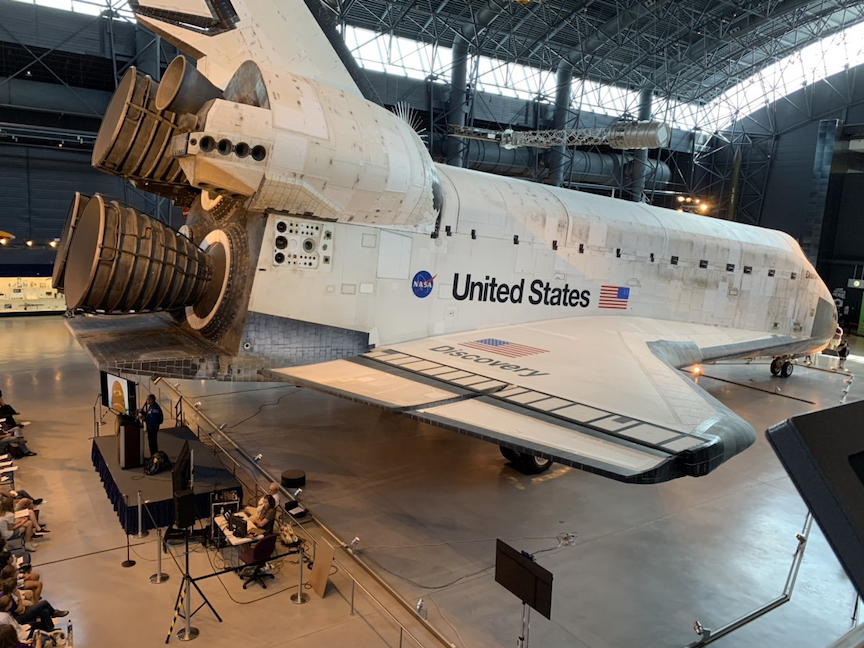
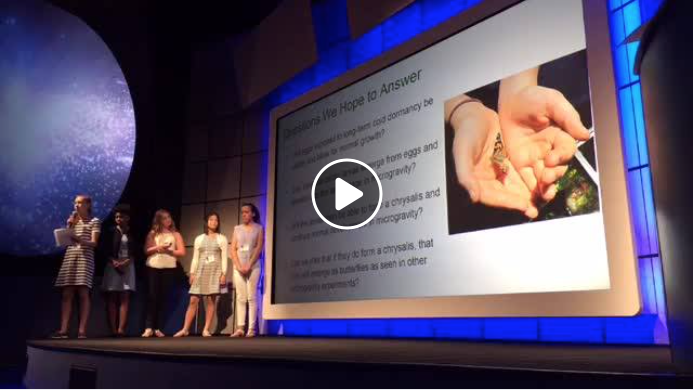
Clear skies. Congratulations to all students researchers.